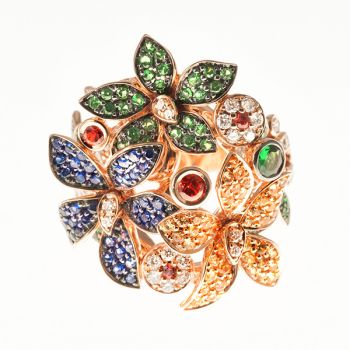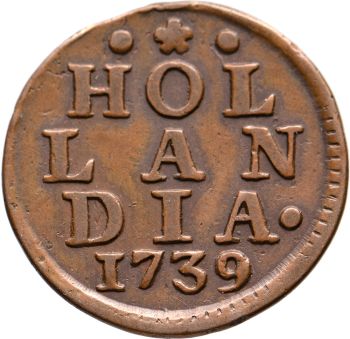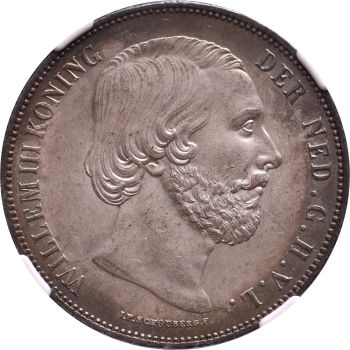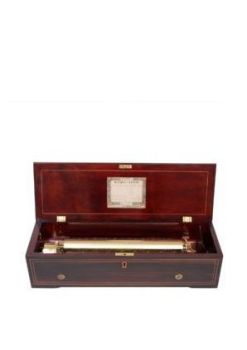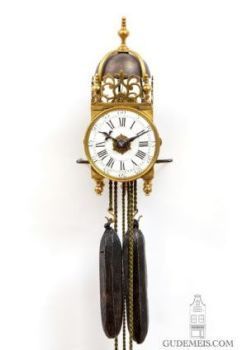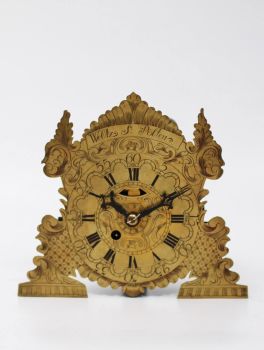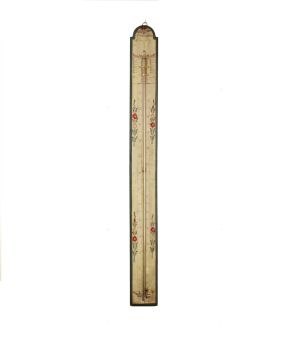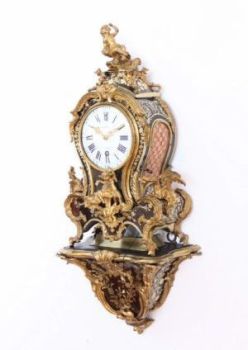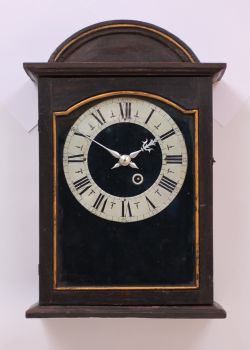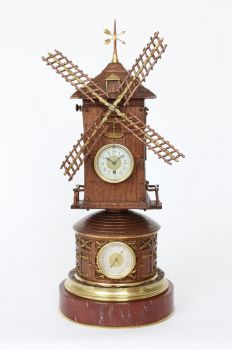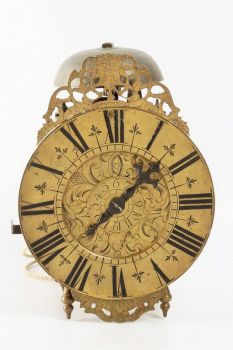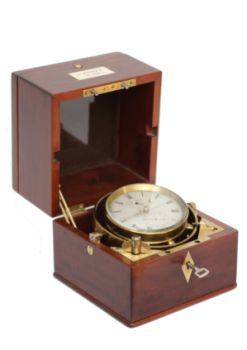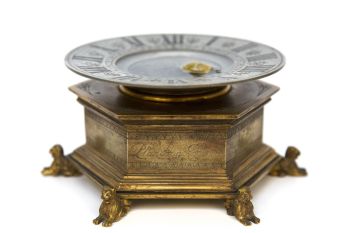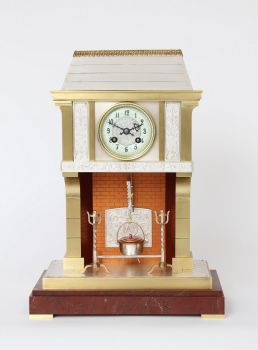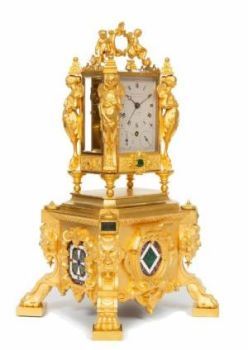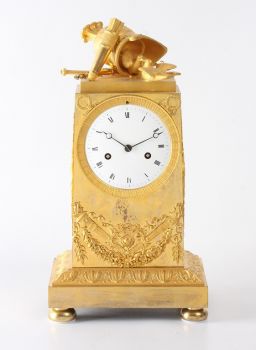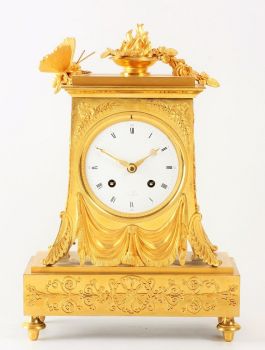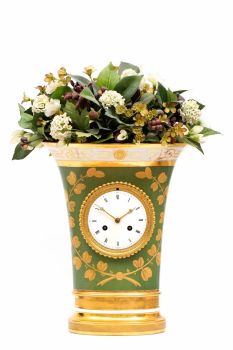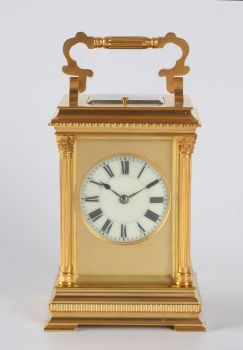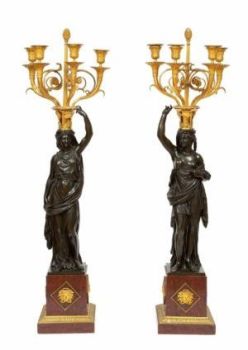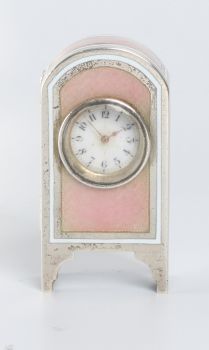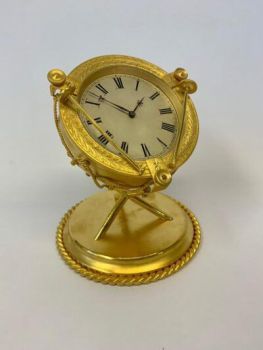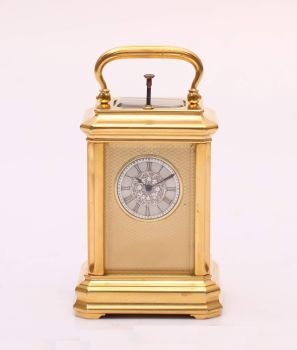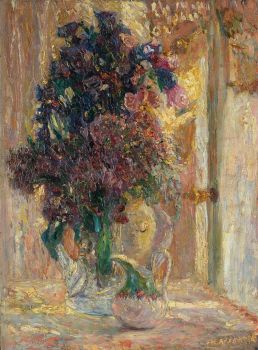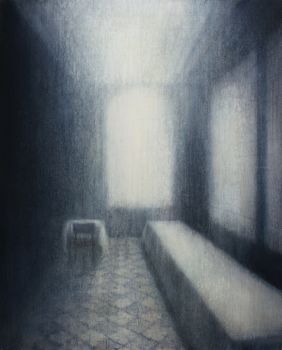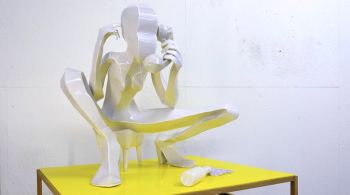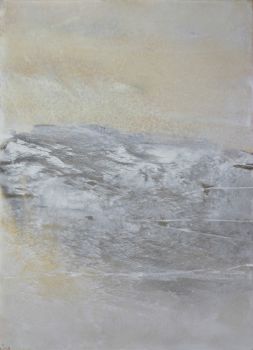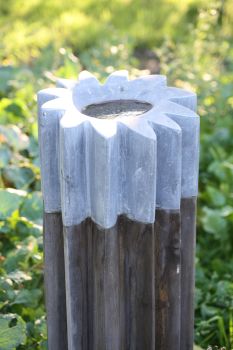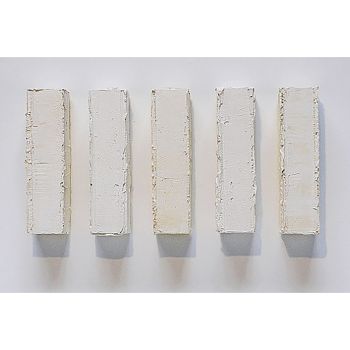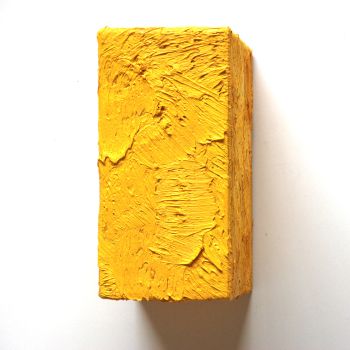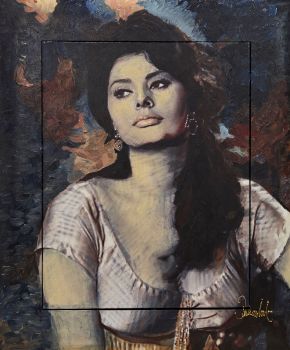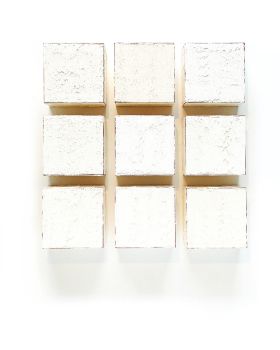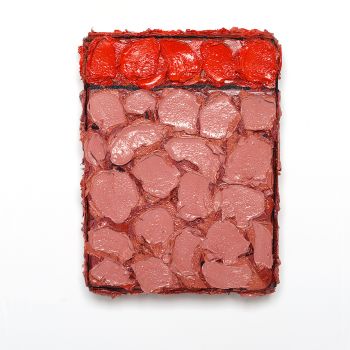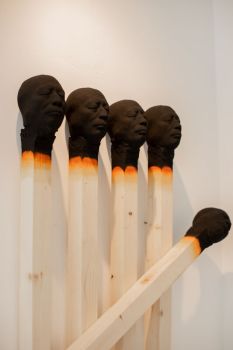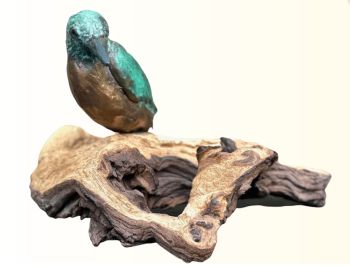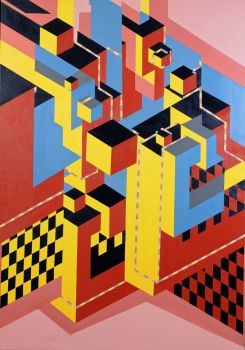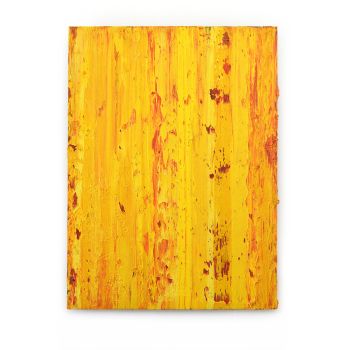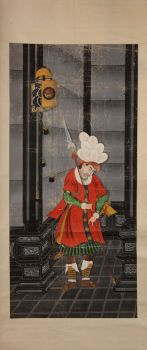A Surinam-themed Amsterdam long-case clock 1746 - 1756
Artista Desconocido
Madera
259 ⨯ 60 ⨯ 35 cm
Precio a consultar
Zebregs & Röell - Fine Art - Antiques
- Sobre la obra de arte
The Netherlands, 1746-1756, dial signed Nicolaas Weylandt/Amsterdam The case of the clock is made of Rio palissander veneer and snakewood, with the arch showing a painted scene of the harbour of Paramaribo, Fort Zeelandia and Dutch ships in anchorage, the spandrels decorated with figural representations of the four continents, the centre of the dial painted with Mercury, the god of trade, seated on a bale signed VCS (Vereenigde Compagnie Suriname), and one of the barrels bearing the initials “RBS,” on the left the river god of the Surinam river, with a Dutch three-master in the background. H. 259 x W. 60 x D. 35 cm (case) Diam. 32 cm (clock dial) This exceptionally rare long-case clock probably was ordered by one of the many wealthy families living along the Amsterdam canals that owned or had shares in plantations in Surinam. It’s a successful marriage of the work of an accomplished 18th century Amsterdam clockmaker, a Dutch cabinetmaker working with exotic tropical timbers, a woodcarver familiar with both Dutch rococo design and Surinamese iconography, and a painter with knowledge, whether first-hand or through other visualisations, of the Paramaribo waterfront. In the production of this Gesamtkunstwerk, only the name of the clockmaker is known: Nicloaas Weylandt (c. 1700 - 1754), who had a business situated on the Nieuwendijk near the Haarlemmersluis in Amsterdam from 1742 until his death. The case is made of imported timbers from Surinam; Rio-palissander and snakewood. A very similar clock-case, veneered in walnut, is illustrated in J. Zeeman, De Nederlandse staande klok, Zwolle, 1996, and dated c. 1740. That clock is also by Weylandt, so the case most likely also is by the same cabinetmaker working for Weylandt. Zeeman points out that 18th-century Dutch clockmakers relied extensively on imported clock parts, like the clock face, the various dials and clock hands, mainly from Britain. Besides, Amsterdam clockmakers outsourced the cabinetmaking, carving and painting to independent artisans. The Surinam character of the clock is evident not only in the timbers used, nor in the painted view of Paramaribo in the clock arch, but also very specific in the depiction of the parrots in the carved rococo centre block in the arch and the smaller carving in the door. Weylandt’s clock has a 7-day twin-barrel anchor movement, with a bell-strike on the hour and half-hour. It is fitted with a second dial, day aperture and alarm setting disk. Exhibited: De Grote Suriname Tentoonstelling, Nieuwe Kerk, Amsterdam, 5 October 2019 - 2 February 2020.
- Sobre el artista
Puede suceder que un artista o creador sea desconocido.
Algunas obras no deben determinarse por quién está hecho o por (un grupo de) artesanos. Algunos ejemplos son estatuas de la Antigüedad, muebles, espejos o firmas que no son claras o legibles, pero también algunas obras no están firmadas en absoluto.
También puedes encontrar la siguiente descripción:
•"Atribuido a …." En su opinión, probablemente una obra del artista, al menos en parte.
•“Estudio de….” o “Taller de” En su opinión, una obra ejecutada en el estudio o taller del artista, posiblemente bajo su supervisión
•“Círculo de…” En su opinión, una obra del período del artista que muestra su influencia, estrechamente asociado con el artista pero no necesariamente su alumno.
•"Estilo de …." o “Seguidor de…”. En su opinión, una obra ejecutada al estilo del artista pero no necesariamente por un alumno; puede ser contemporáneo o casi contemporáneo
•"Manera de …." En su opinión una obra al estilo del artista pero de fecha posterior
•"Después …." En su opinión, una copia (de cualquier fecha) de una obra del artista
•“Firmado…”, “Fechado…” o “Inscrito” En su opinión, la obra ha sido firmada/fechada/inscrita por el artista. La adición de un signo de interrogación indica un elemento de duda.
•“Con firma…”, “Con fecha…”, “Con inscripción…” o “Lleva firma/fecha/inscripción” en su opinión la firma/fecha/inscripción ha sido añadida por alguien que no es el artista
¿Está interesado en comprar esta obra de arte?
Artwork details
Related artworks
Artista Desconocido
Een Gotische zuidelijke Nederlanden wandklok1580 - 1590
Precio a consultarNico van den Assem restauratie
Artista Desconocido
UN PEQUEÑO NETSUKE DE MARFIL DE UN HOLANDÉS CON UN TAMBOR1750 - 1800
Precio a consultarZebregs & Röell - Fine Art - Antiques
1 - 4 / 12Artista Desconocido
A superb Indonesian royal gem-set gold overlaid silver betel box19th century
Precio a consultarZebregs & Röell - Fine Art - Antiques
 curada por
curada porDanny Bree
Artista Desconocido
Een Gotische zuidelijke Nederlanden wandklok1580 - 1590
Precio a consultarNico van den Assem restauratie
Artista Desconocido
A Dutch colonial Indonesian betel box with gold mounts1750 - 1800
Precio a consultarZebregs & Röell - Fine Art - Antiques
1 - 4 / 24Firm Erhard & Sohne, Schwäbisch Gmünd
Erhard und Söhne – Jugendstil intarsia klok – 1908 / 19091900 - 1909
Precio a consultarAntiques Emporium
Artista Desconocido
Engels struttclock gesigneerd H.Rodrigues 42 Piccadilly 19th century
Precio a consultarNico van den Assem restauratie
1 - 4 / 24Artista Desconocido
A Dutch colonial Indonesian betel box with gold mounts1750 - 1800
Precio a consultarZebregs & Röell - Fine Art - Antiques
Artista Desconocido
A superb Indonesian royal gem-set gold overlaid silver betel box19th century
Precio a consultarZebregs & Röell - Fine Art - Antiques
Artista Desconocido
Japanese transition-style lacquer coffer 1640 - 1650
Precio a consultarZebregs & Röell - Fine Art - Antiques
1 - 4 / 24- 1 - 4 / 24
Artista Desconocido
The Stamford Raffles Secretaires.1800 - 1813
Precio a consultarZebregs & Röell - Fine Art - Antiques
Artista Desconocido
UNA COLECCIÓN DE CUATRO CAJAS BÍBLICAS DE MARFIL DE SRI LANKAN18th century
Precio a consultarZebregs & Röell - Fine Art - Antiques
Shiba Kokan
Pintura de un holandés de fantasíaearly 19th
Precio a consultarZebregs & Röell - Fine Art - Antiques
Artista Desconocido
UN NETSUKE DE MARFIL DE UN HOLANDÉS CON UNA COCKEREL18th century
Precio a consultarZebregs & Röell - Fine Art - Antiques
Dutch School
Llegada de un holandés de las Indias Orientales a Table Bay18th century
Precio a consultarZebregs & Röell - Fine Art - Antiques
1 - 4 / 12














